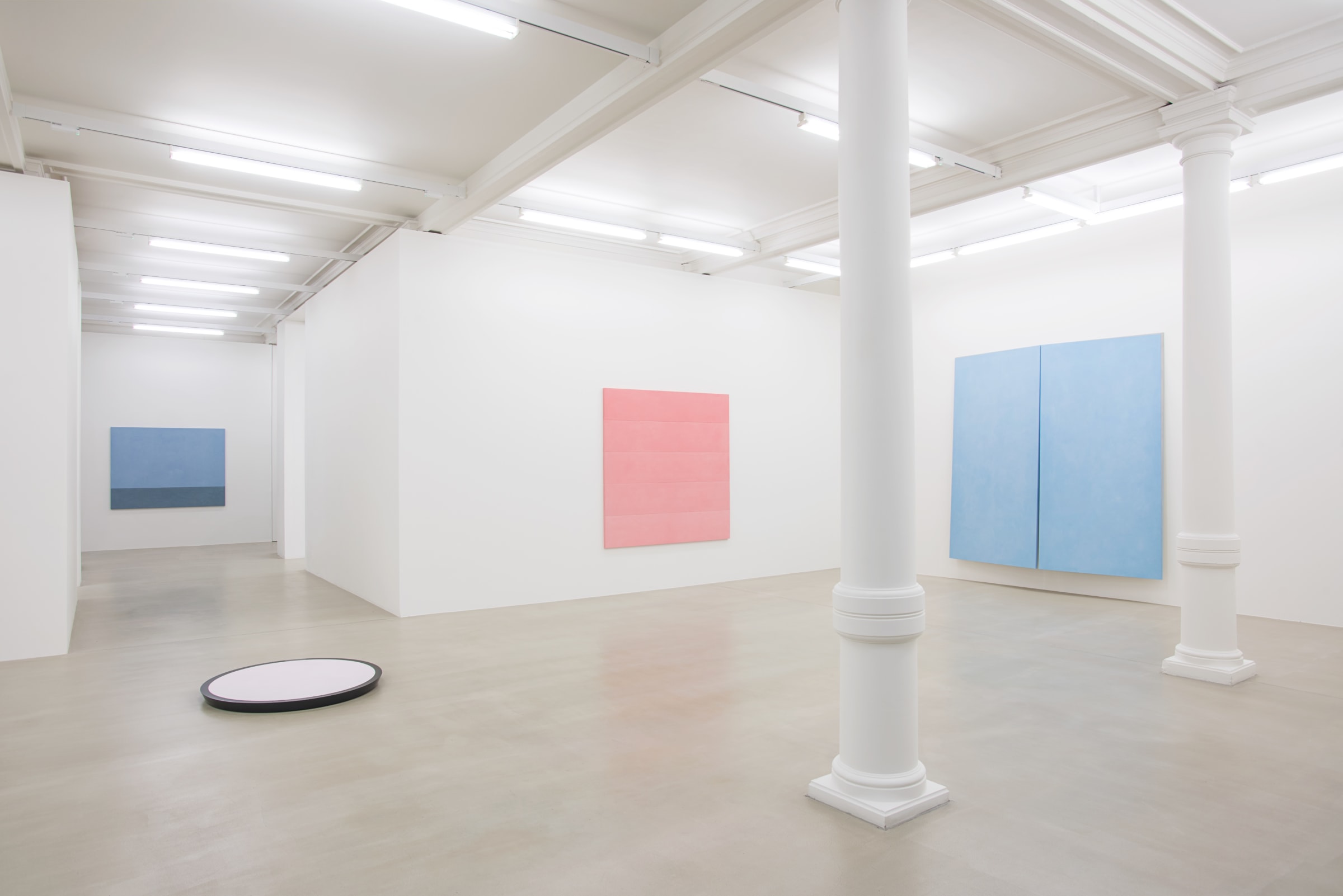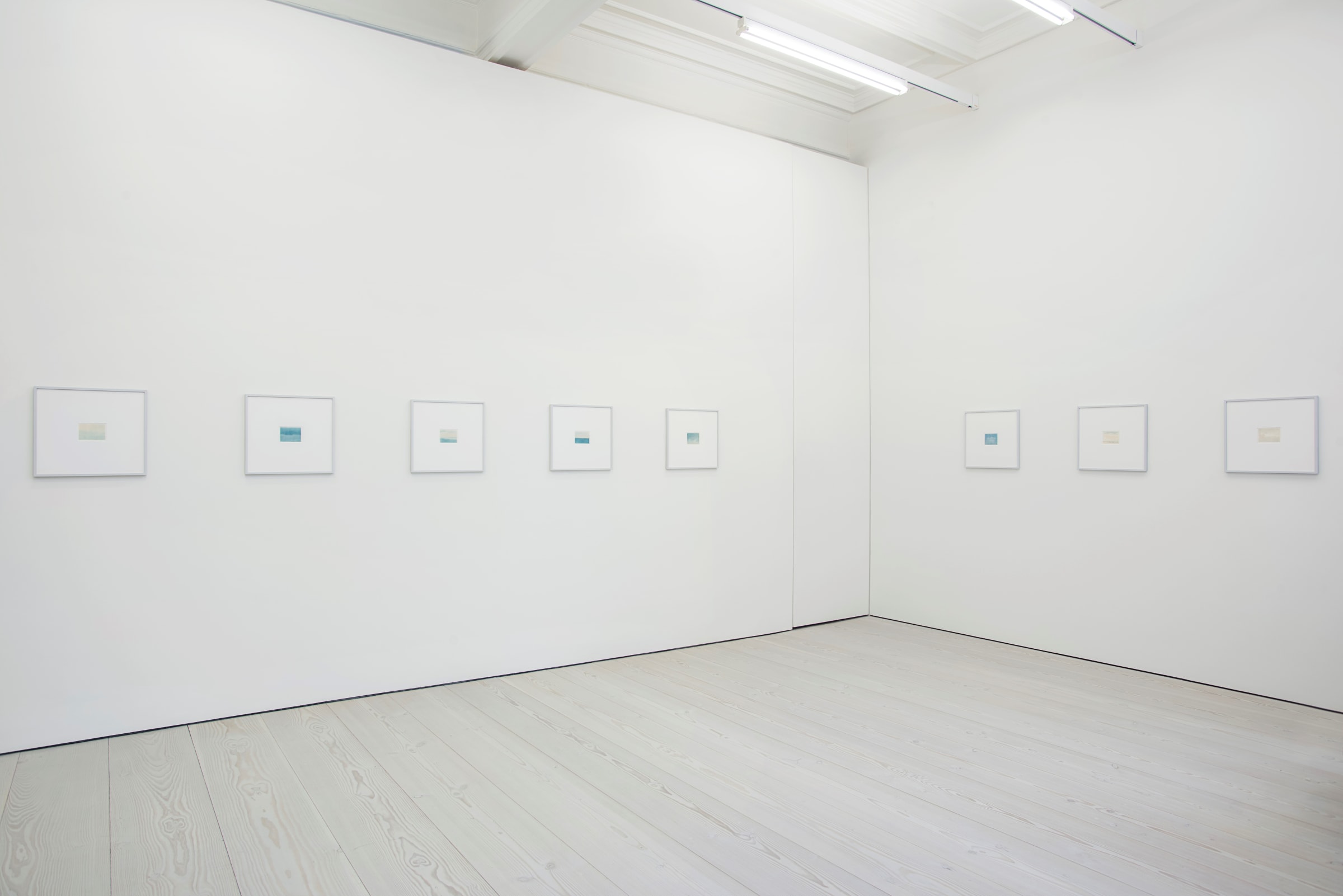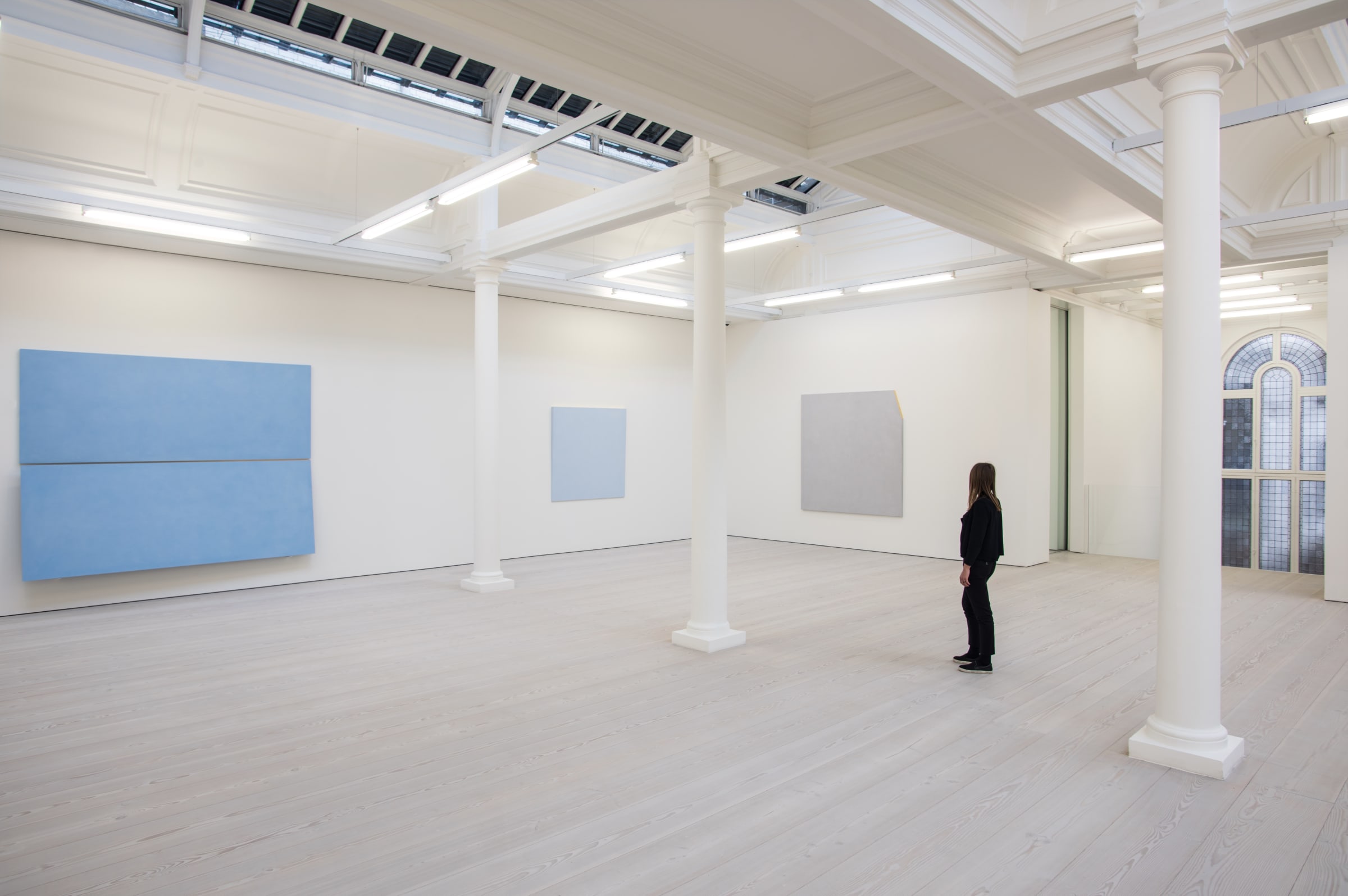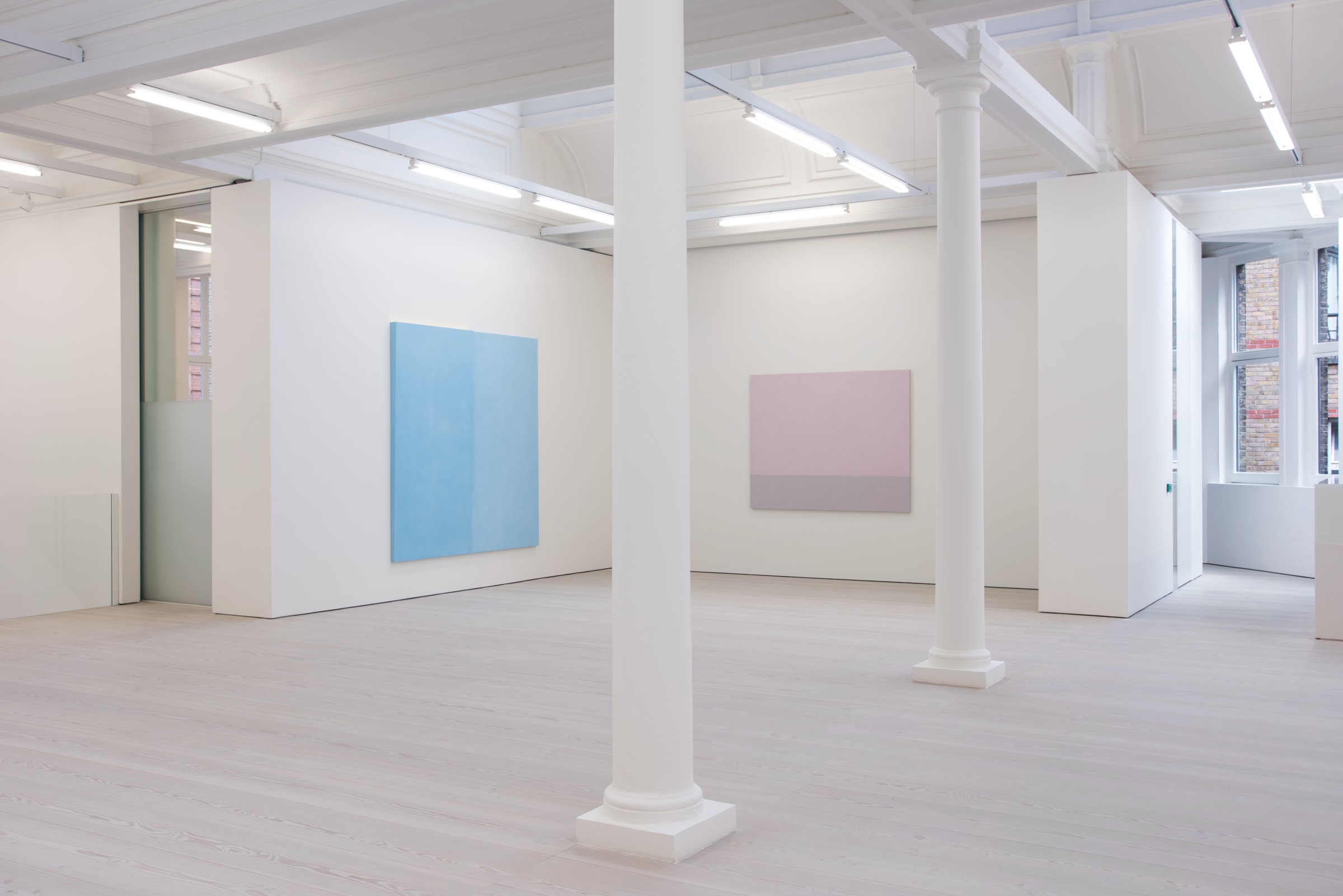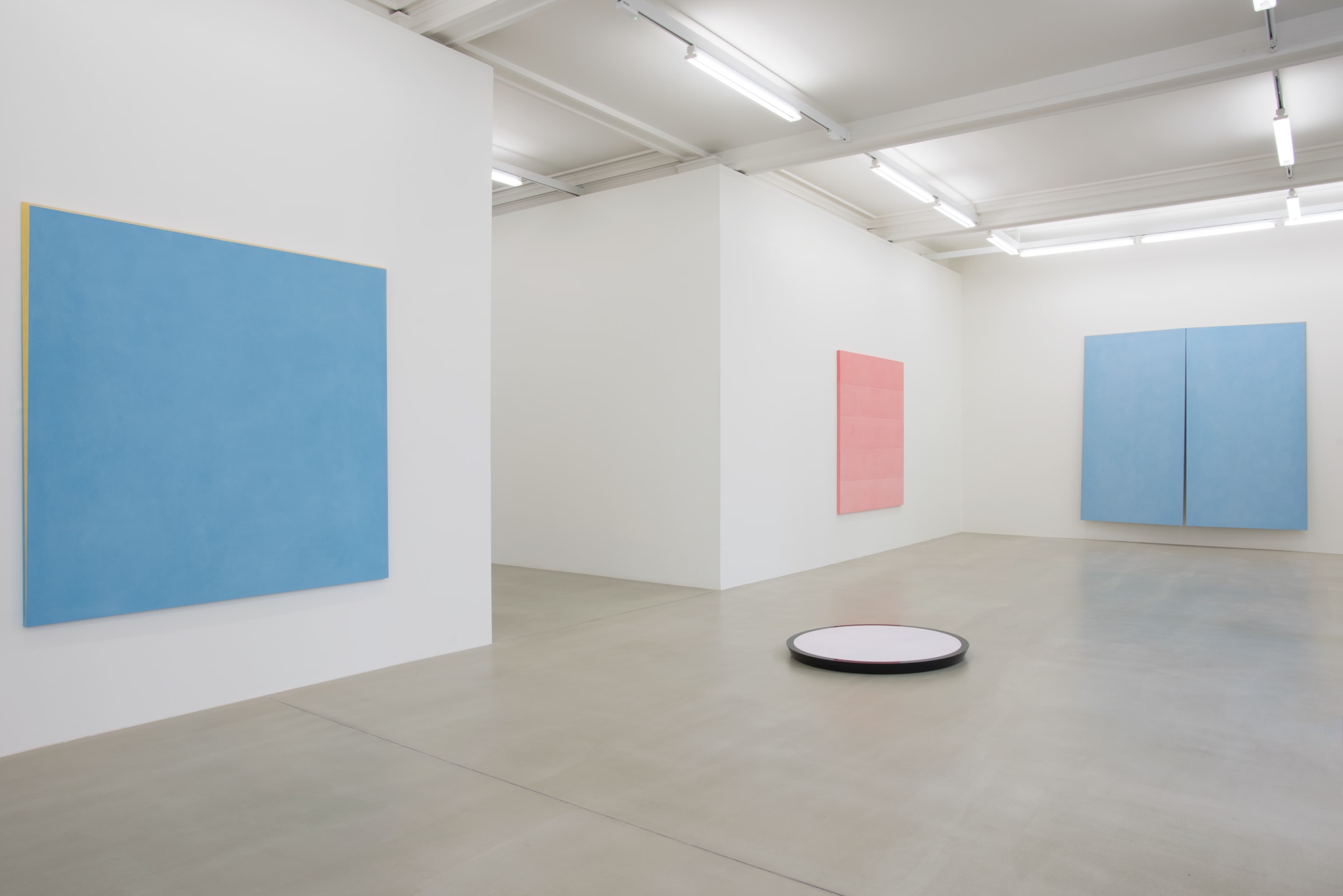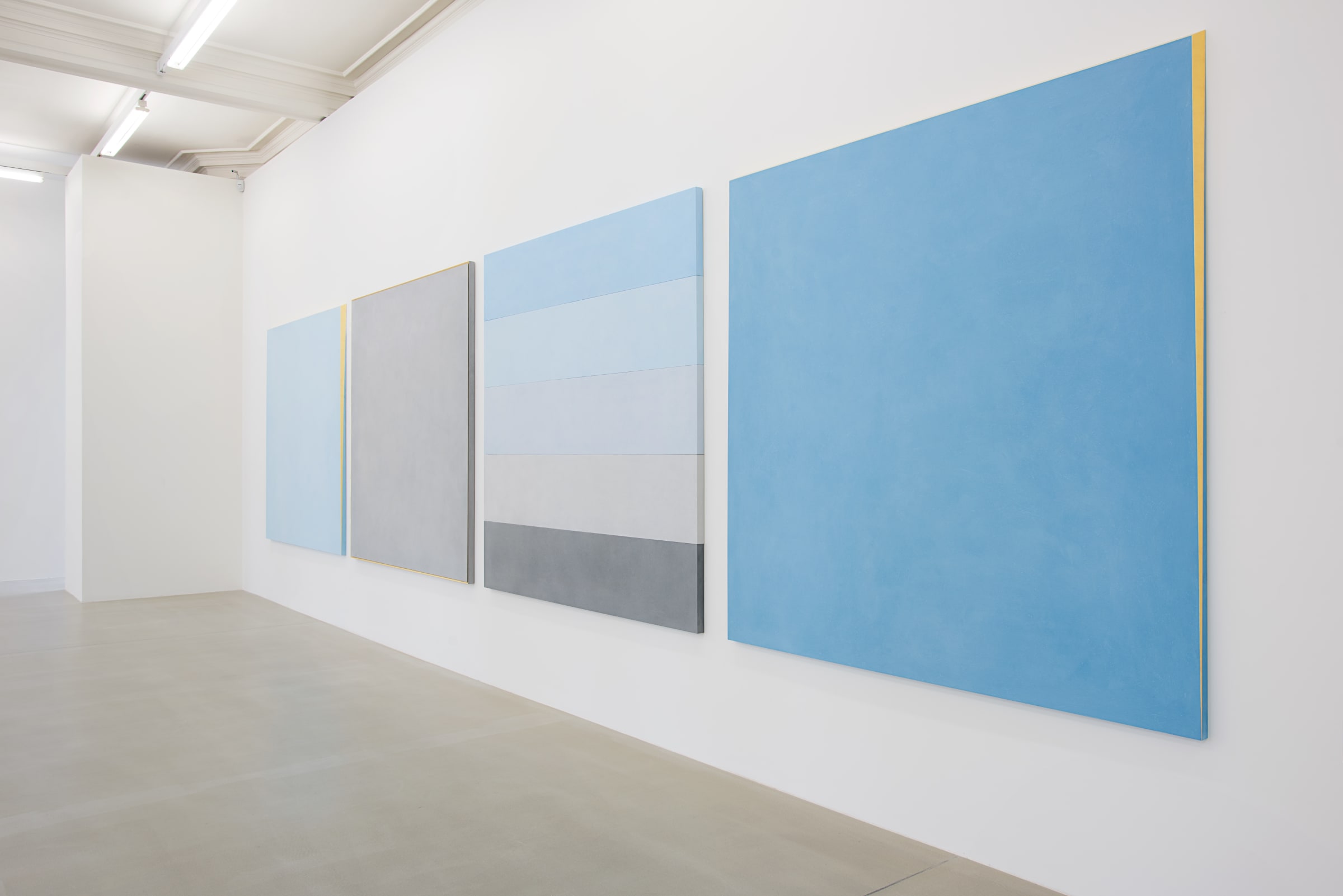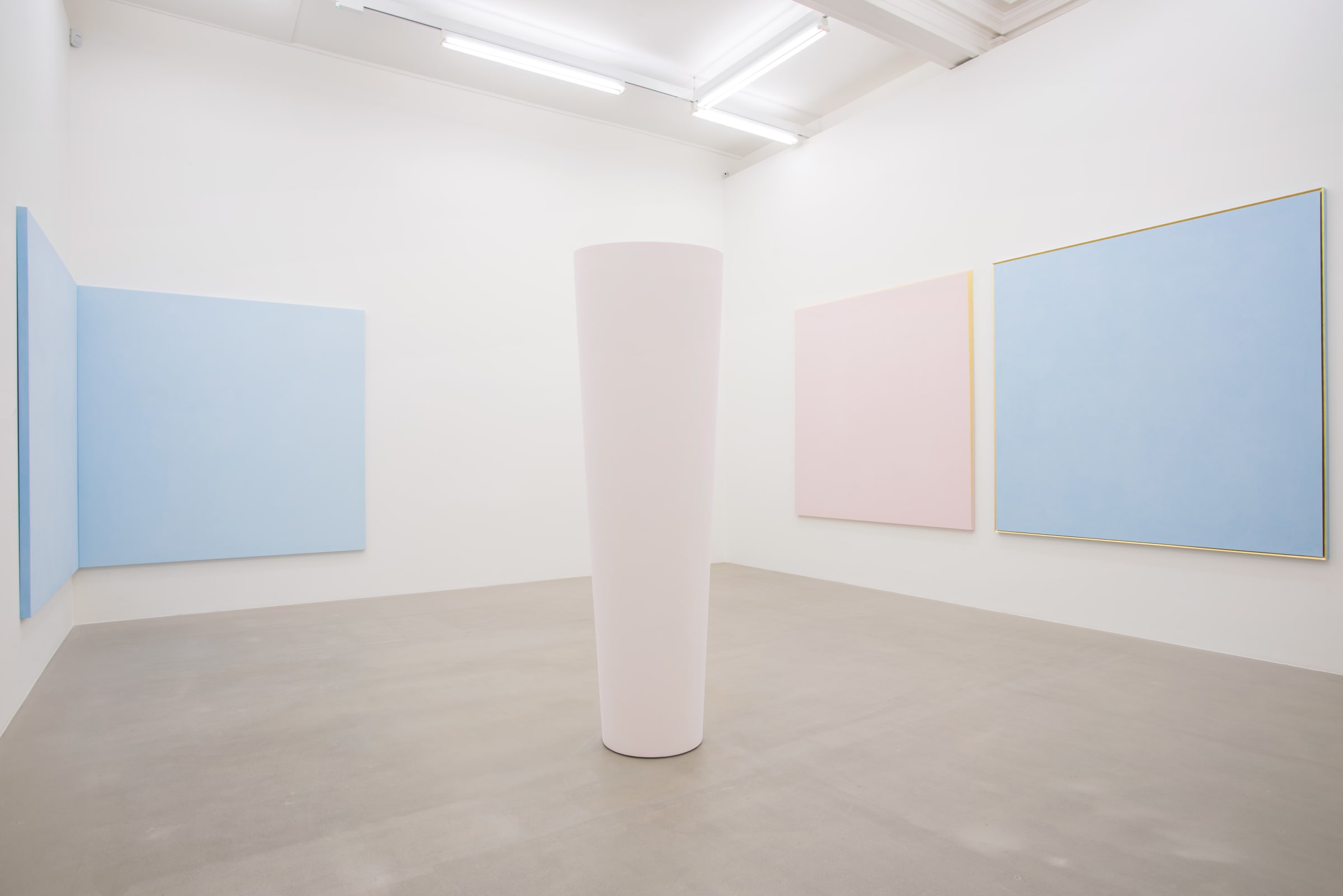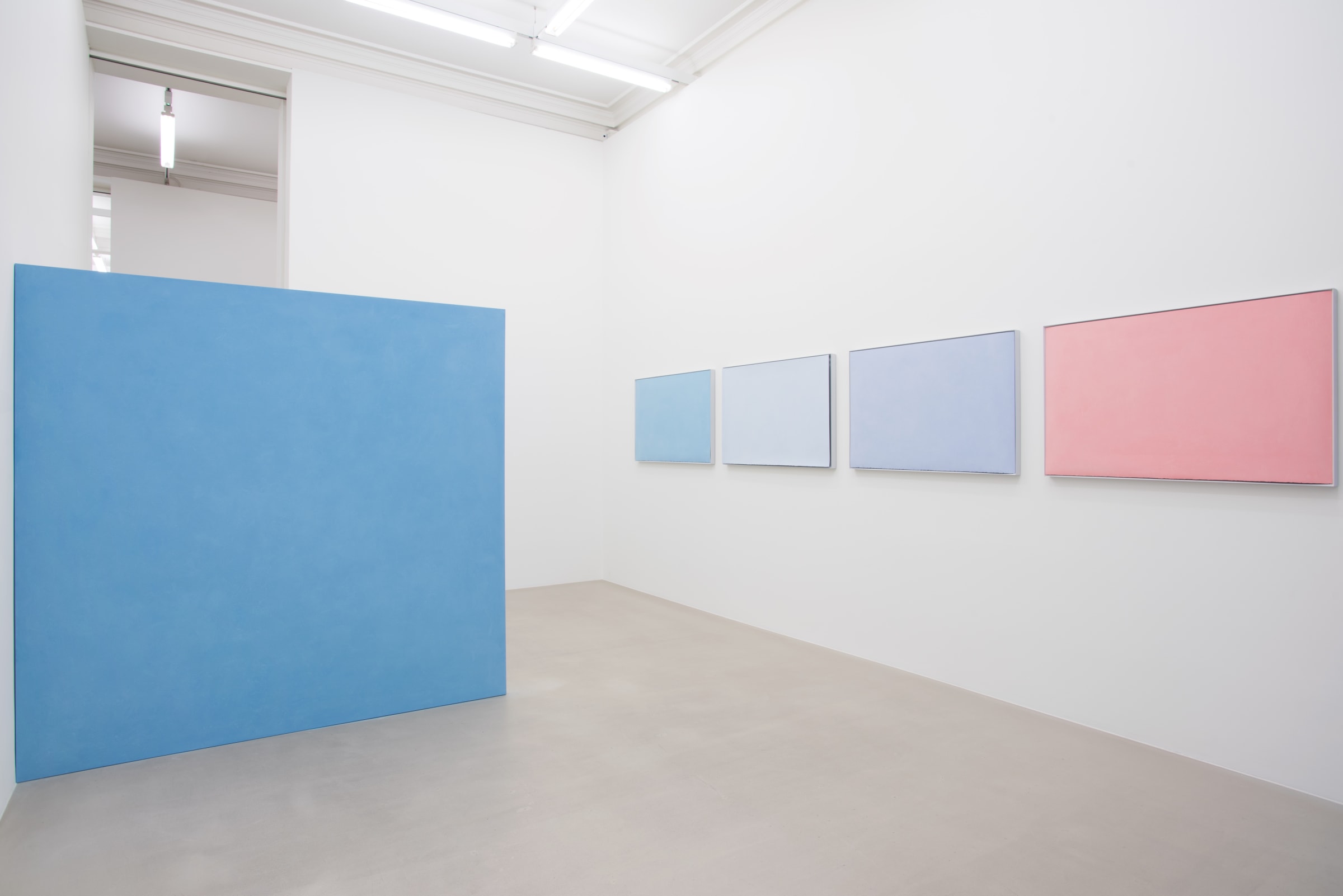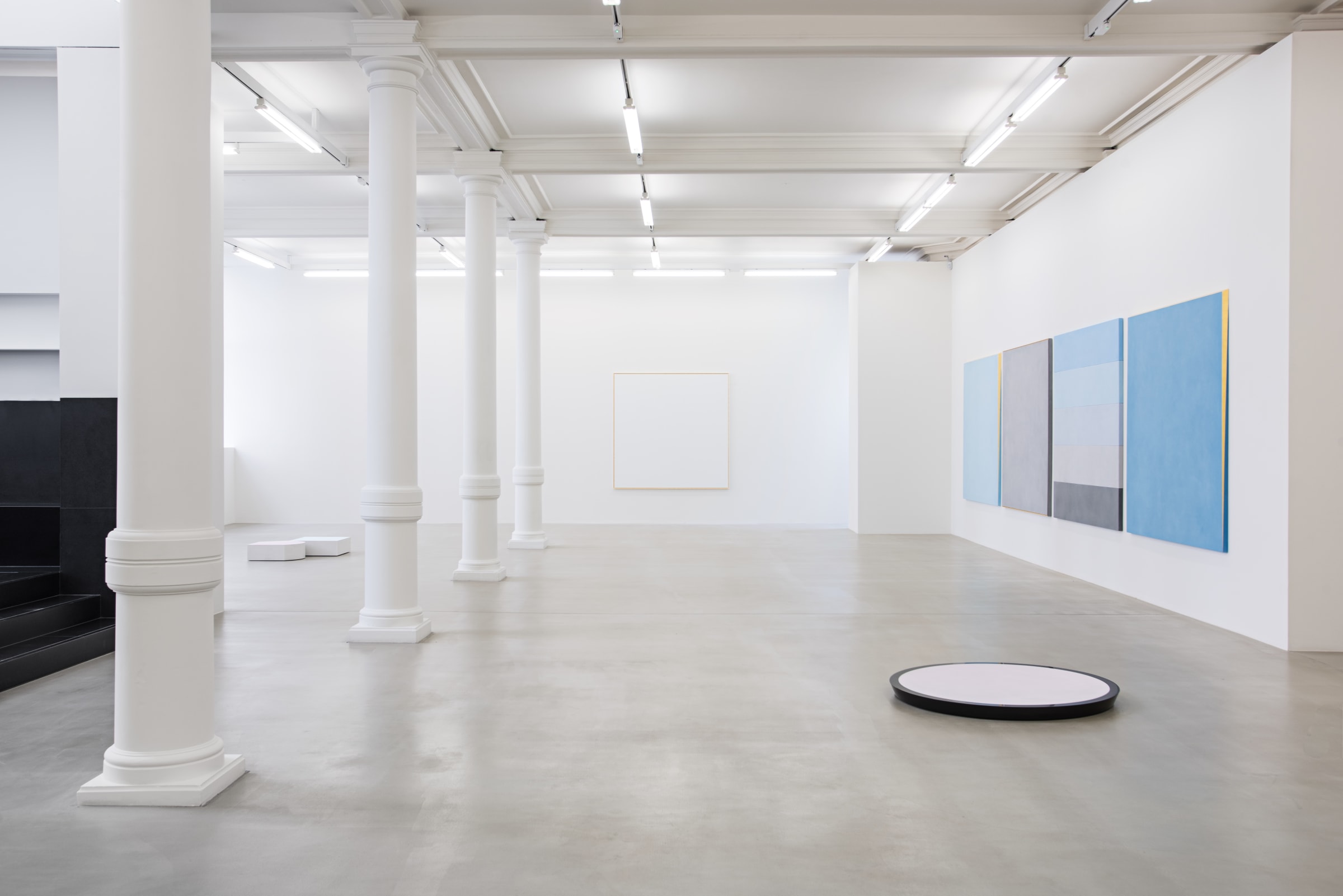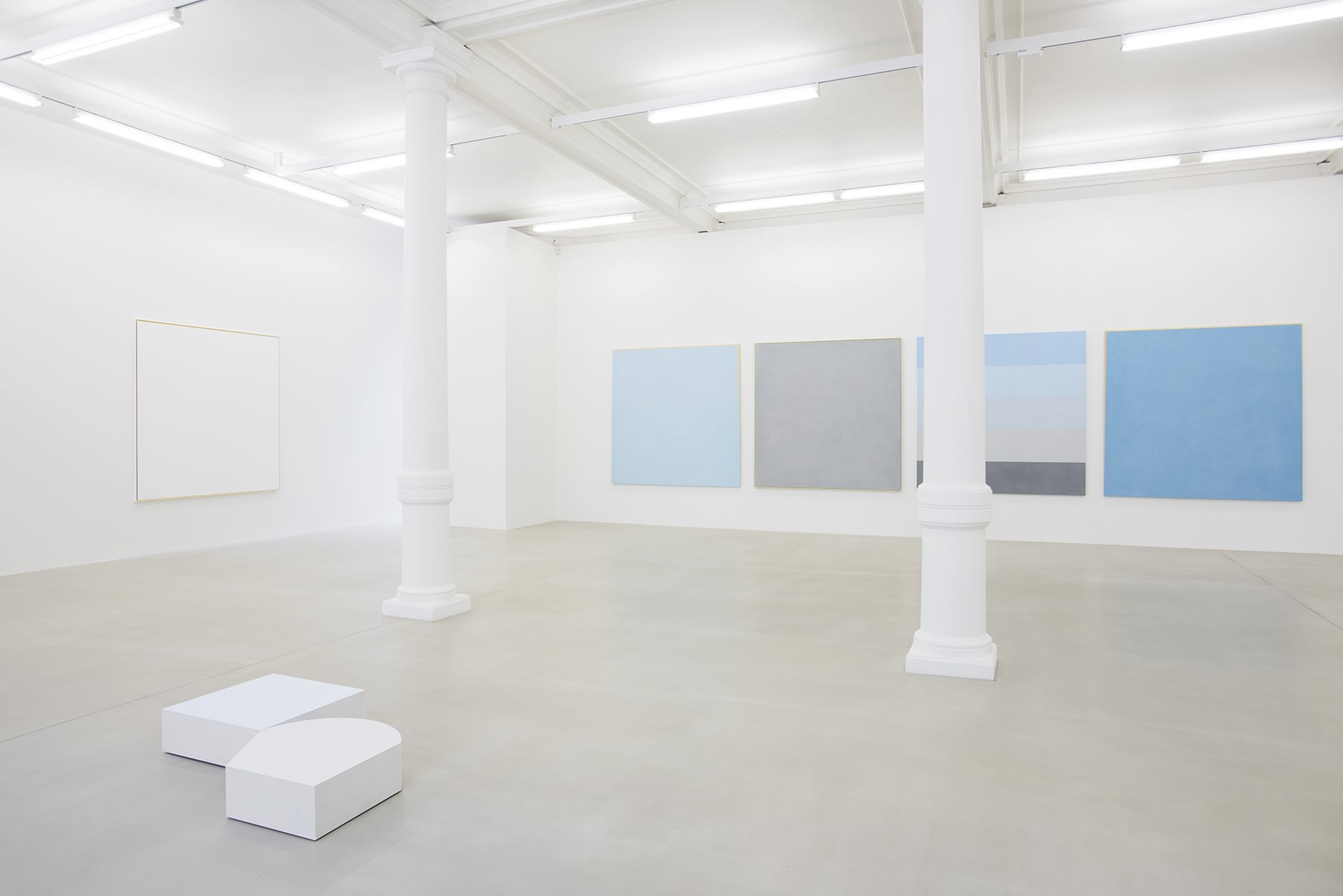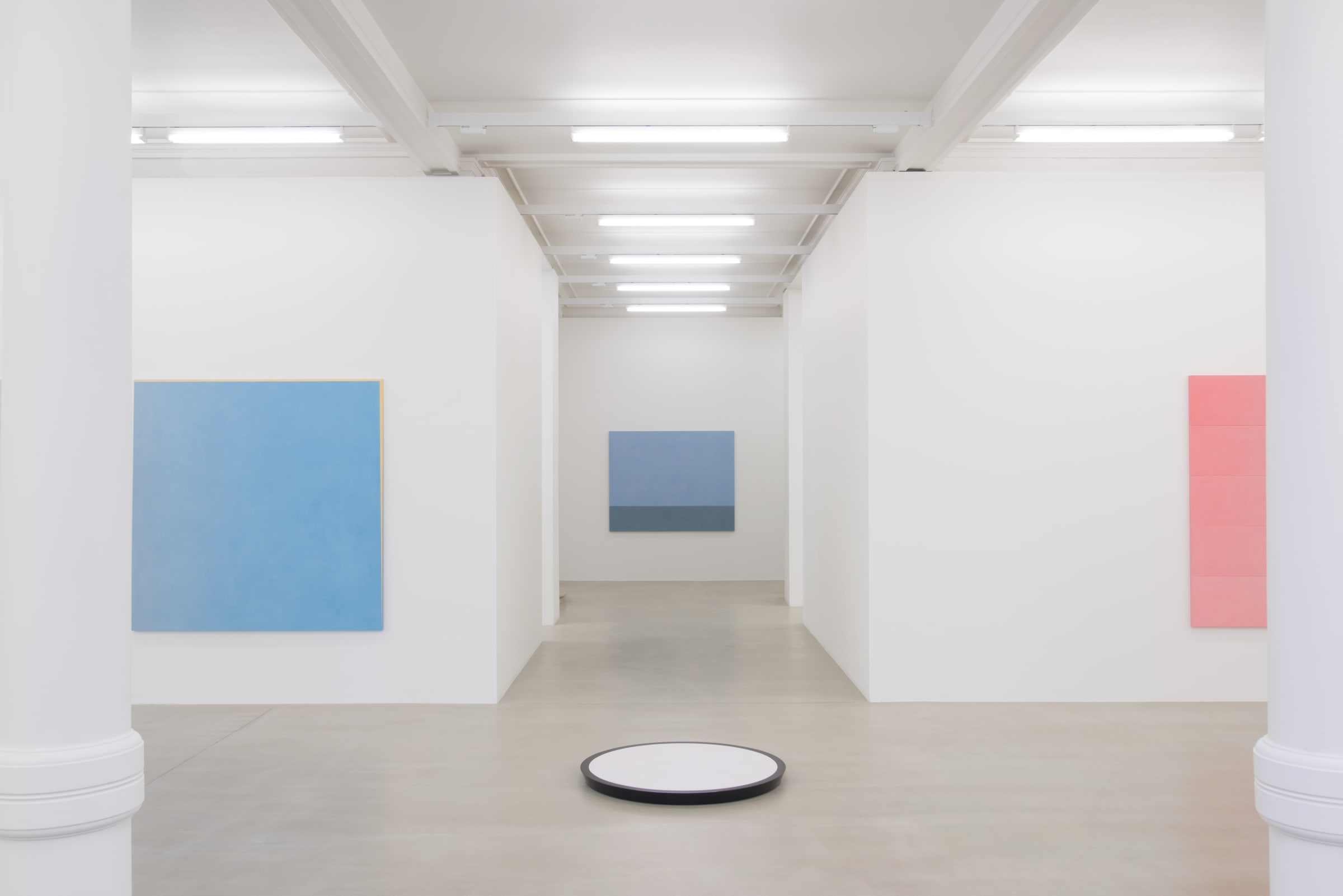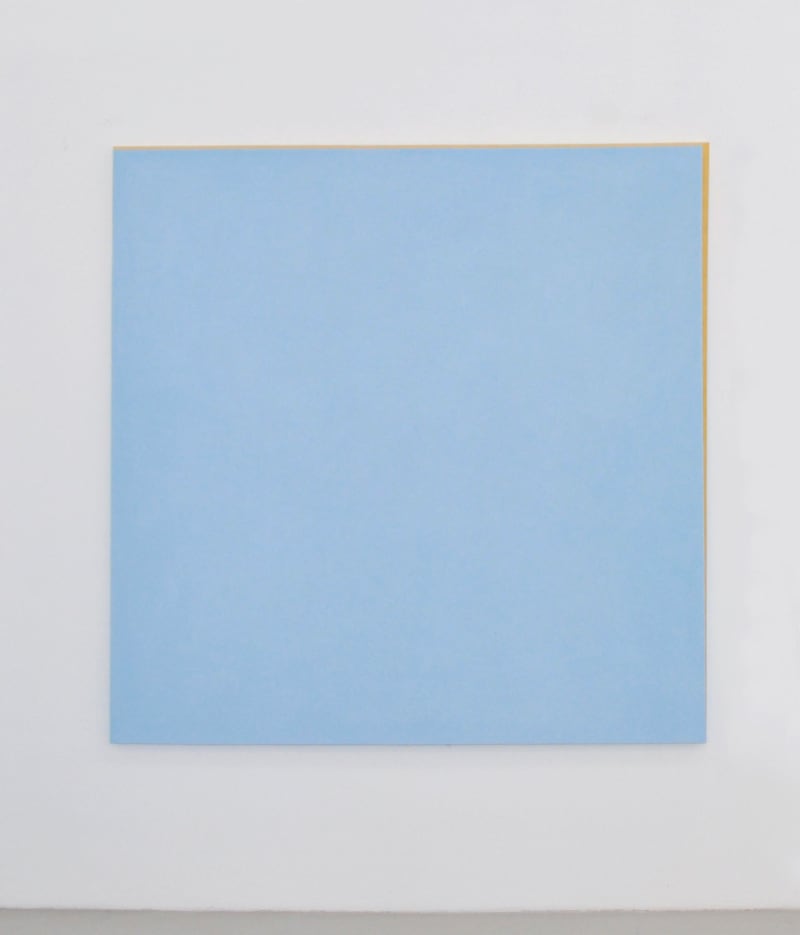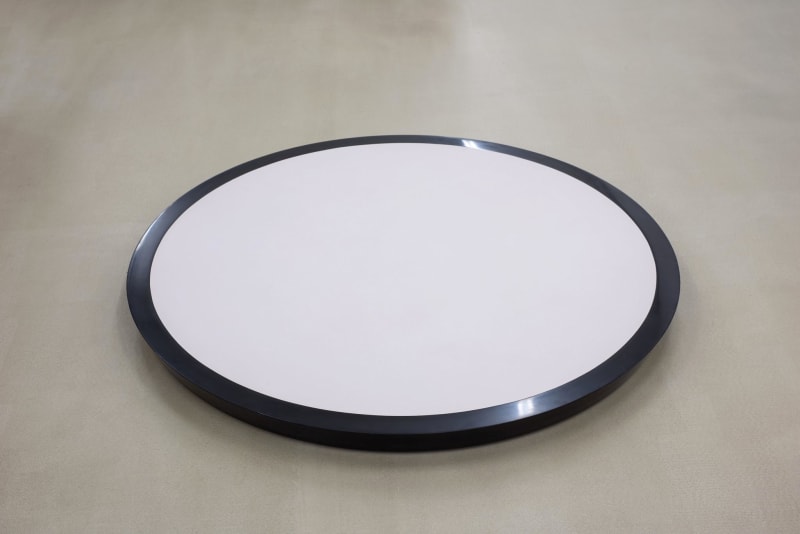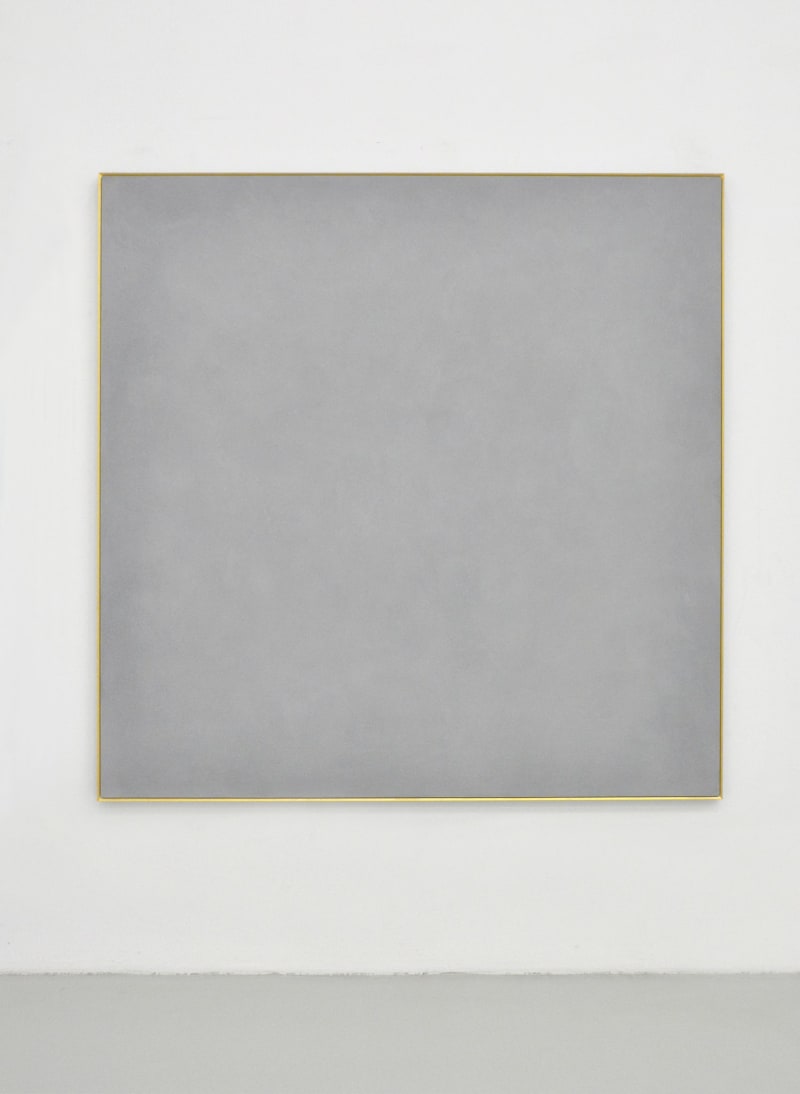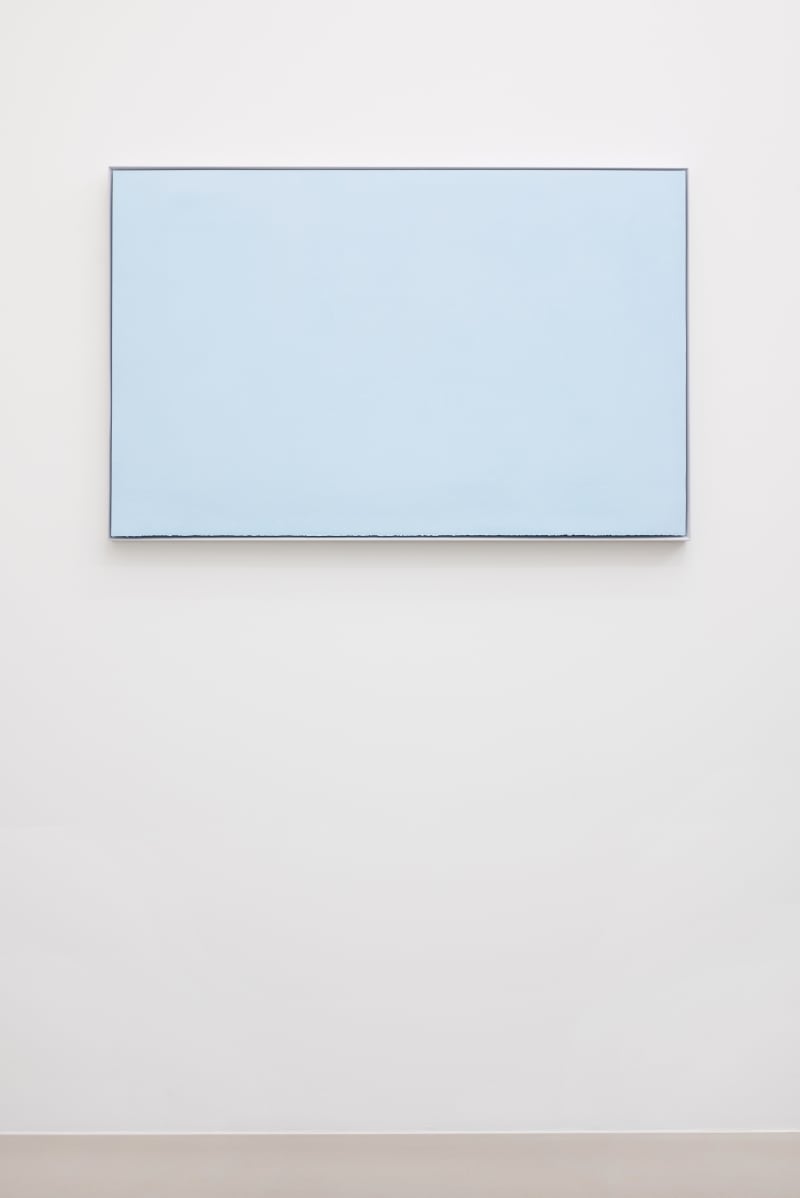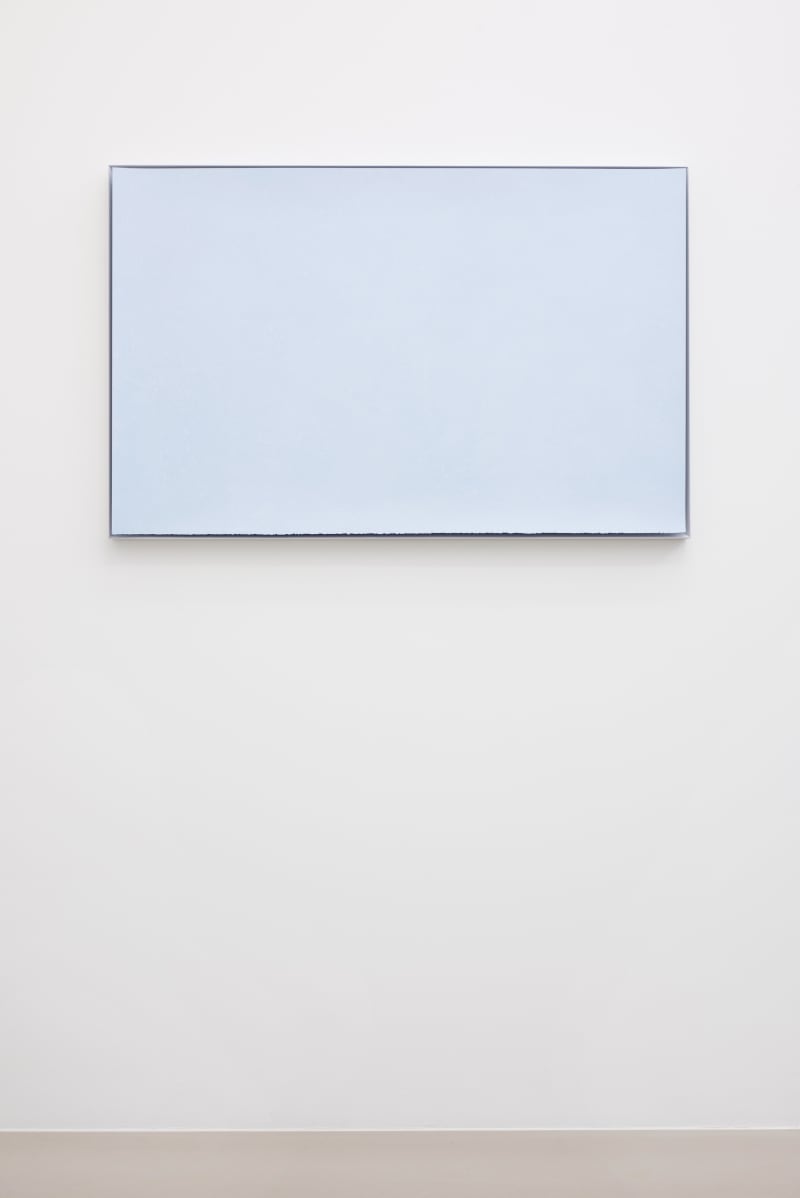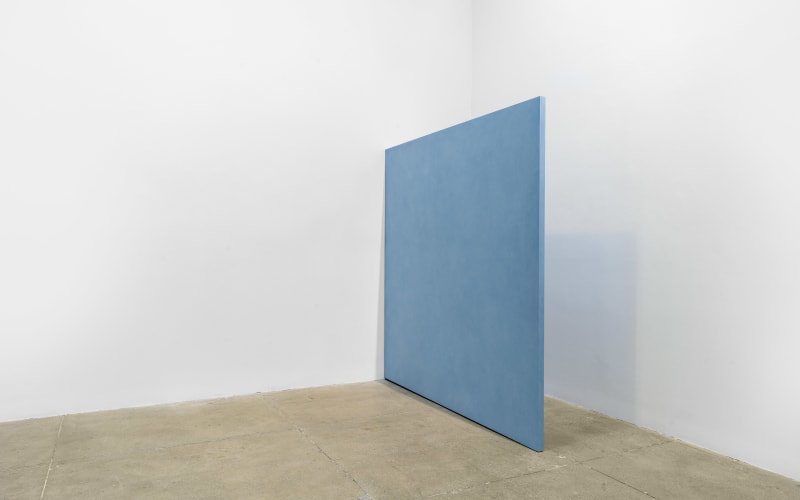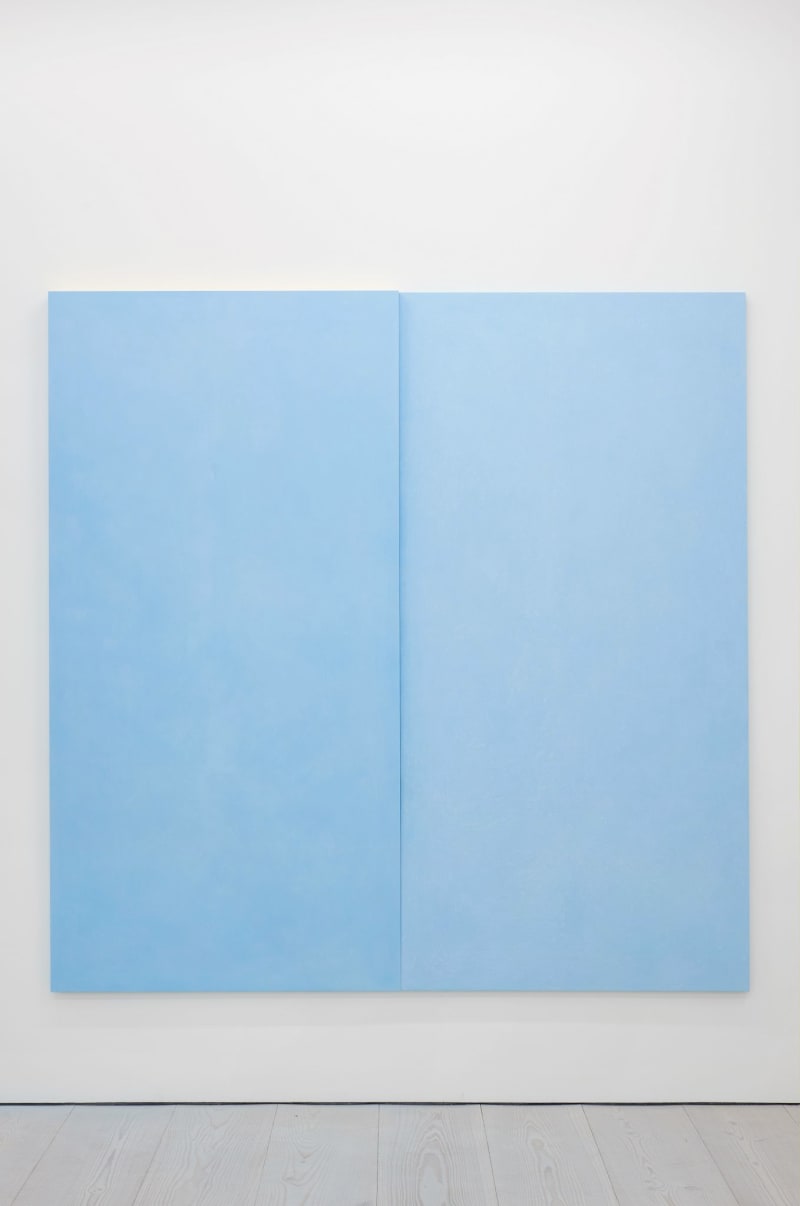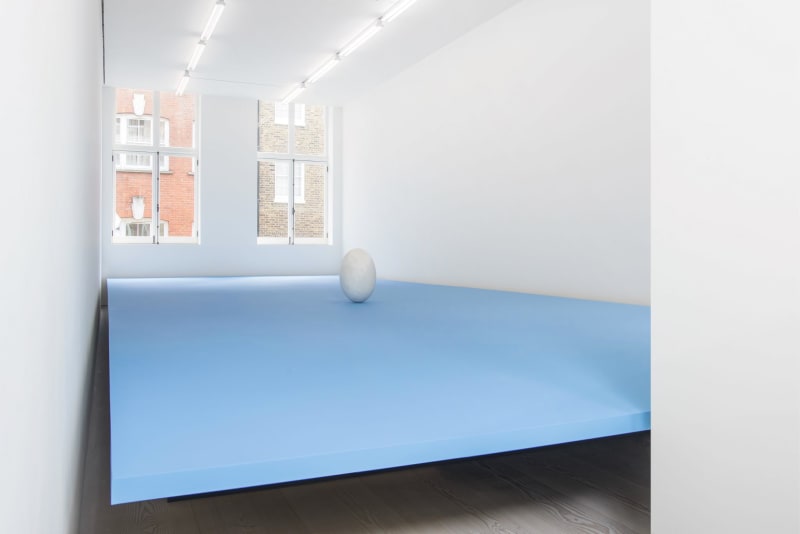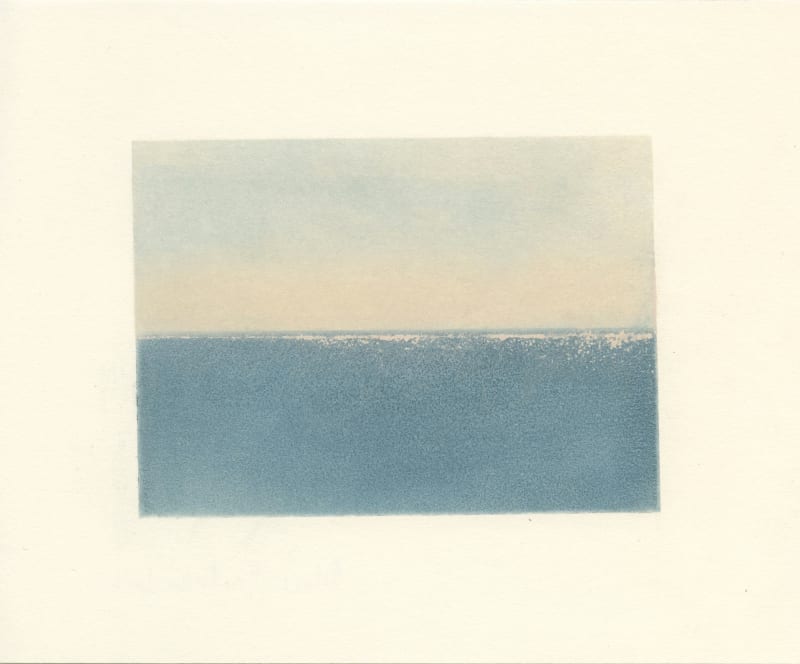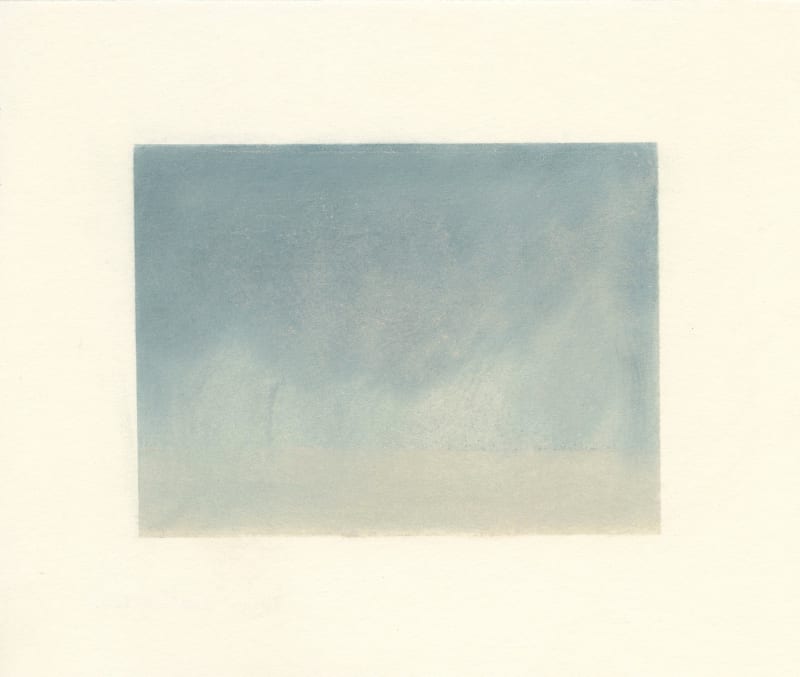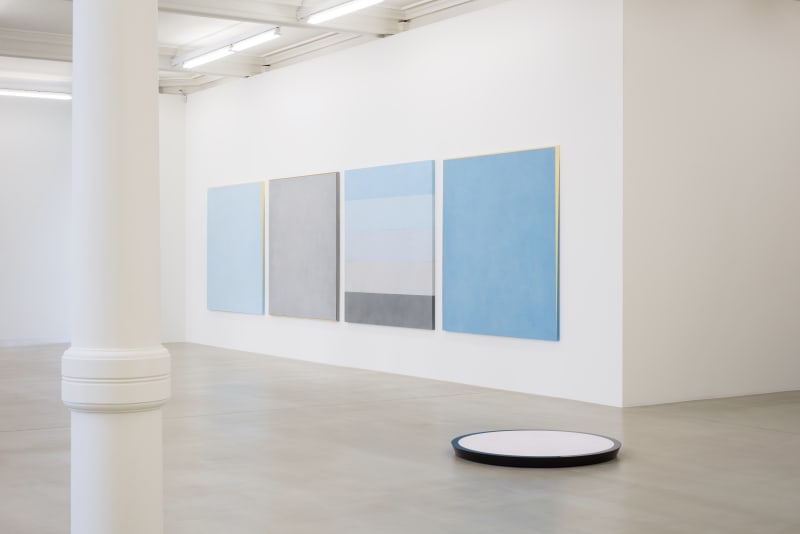Overview
Marian Goodman Gallery London is pleased to announce our first exhibition with Ettore Spalletti, combining recent and important earlier paintings, sculpture and works on paper in an encompassing yet atemporal installation that permeates and subtly alters the gallery’s interior architecture. Whether physically flush against, or lifting itself away from the wall, Spalletti’s work floats between painting and sculpture, integrating itself into the architectural environment. The ground floor north gallery displays an installation that follows the architectural dictates of the space, becoming an indivisible part of the room. Encountering the work’s refined geometries and vibrating colour fields, one imagines both looking into an interior and onto an open exterior through a fictive frame. Its plains of colour, in the form of squares, rectangles, or ovals become simultaneously internal and external.
Ettore Spalletti: Every dawn, is first / Ogni alba, è la prima
April 28 – June 4, 2016
Opening Reception: Thursday, April 28, 6-8 pm
Marian Goodman Gallery London is pleased to announce our first exhibition with Ettore Spalletti, combining recent and important earlier paintings, sculpture and works on paper in an encompassing yet atemporal installation that permeates and subtly alters the gallery’s interior architecture. This marks the first UK solo presentation of the Italian artist since his 2005 exhibition at the Henry Moore Institute.
In the main space on the ground floor, Spalletti presents a series of multi-panel paintings in azure blue. Some torque away from the wall, reaching into the room and saturating it with colour, which itself becomes both physical and structural. Each work balances a gently insistent presence with an ethereal materiality. The main upper gallery displays his most recent paintings, including the multi-panel Paesaggio works that recall the sea and landscape views from around his studio in Abruzzo, on the Italian Adriatic Coast. A levitating blue field, supporting an ovoid alabaster sculpture, fills the adjacent upper side gallery as a site-specific installation.
Whether physically flush against, or lifting itself away from the wall, Spalletti’s work floats between painting and sculpture, integrating itself into the architectural environment. The ground floor north gallery displays an installation that follows the architectural dictates of the space, becoming an indivisible part of the room. Encountering the work’s refined geometries and vibrating colour fields, one imagines both looking into an interior and onto an open exterior through a fictive frame. Its plains of colour, in the form of squares, rectangles, or ovals become simultaneously internal and external.
Spalletti’s formal vocabulary has always melded and balanced painting and sculpture, form and colour, interior and exterior space. Each work is the result of a meditative but rigorous process of applying a layer of colour at the same time of each day, to capture a specific tone that recalls an hour, a season, and the weather. His works’ final surfaces emerge only at the end of the process through gently sanding the accumulated layers, a caress that reveals both an interior luminosity and an external skin that breathes a range of tonal and textural variations. The chromatic background of each work now challenges the original geometric form that once outlined its extent. Spaletti’s colour, through its flickering luminosity and pulsating touch, seems to have detached itself from its two-dimensional support, and in his words, "take(s) on and invade(s) the space".
Spalletti’s practice counters the linear constraints of time on several levels. While he combines the light-suffused hues, tones and grace of Piero della Francesca and Fra Angelico, the geometric reduction of his pictorial world is undeniably Modern. The chronology that usually structures the assessment of an artist’s work seems largely redundant when considering the paintings and sculptures that Spalletti has produced with extraordinary focus and consistency since the 1970s, as evinced here with new and historical pieces interwoven into a unified whole. His work has always traversed the past and present, the figurative and the abstract, the secular and the sublime.
Spalletti began his career when Arte Povera was revolutionising visual culture in Italy and beyond. While he was friends with many of the artists gaining recognition at the time and sympathetic to their practices, he developed a singular, solitary voice and a resultant body of work that exceeds any movement that circumscribes an artist to regional or ideological boundaries. Historically, Spalletti has deliberately rarely shown his work, choosing to fulfill/answer the demands of his intensive practice over those of a relentless schedule of exhibitions.
Ettore Spalletti was born in Cappelle sul Tavo (Pescara) in 1940, where he currently lives and works. He has been the subject of major international exhibitions over the last 40 years, most recently at the Palazzo Cini, Venice (2015) and a retrospective simultaneously presented at three Italian institutions: MADRE – Museo d’Arte Contemporanea Donnaregina, Naples, GAM – Galleria Civica d’Arte Moderna e Contemporanea, Turin, and MAXXI – Museo Nazionale delle Arti del XXI Secolo, Rome (all 2014). Other notable solo exhibitions include GNAM – Galleria Nazionale d’Arte Moderna, Rome (2010); Academie de France, Villa Medici, Rome (2006); the Henry Moore Institute, Leeds (2005); Castello di Rivoli, Museo d’Arte Contemporanea, Rivoli,Turin (2004); Fundación la Caixa, Madrid (2000); Musée d’Art Moderne et Contemporain, Strasbourg (1998); MUHKA – Museum van Hedendaagse Kunst, Antwerp (1995); and Museum Folkwang, Essen (1982). Selected group exhibitions include the Tokyo Museum of Contemporary Art, Tokyo (1998), the Solomon R. Guggenheim Museum, New York (1993 and 2004), the Venice Biennale (1982, 1993, 1995 and 1997) and documenta VII (1982), documenta IX (1992). In 2010, Spalletti was the recipient of the Terna Prize for Contemporary Art.
The gallery is open Tuesday to Saturday, 10am to 6pm. For more information, please contact Charlie Dunnery McCracken on +44 (0)20 7099 0088 or charlie@mariangoodman.com.
